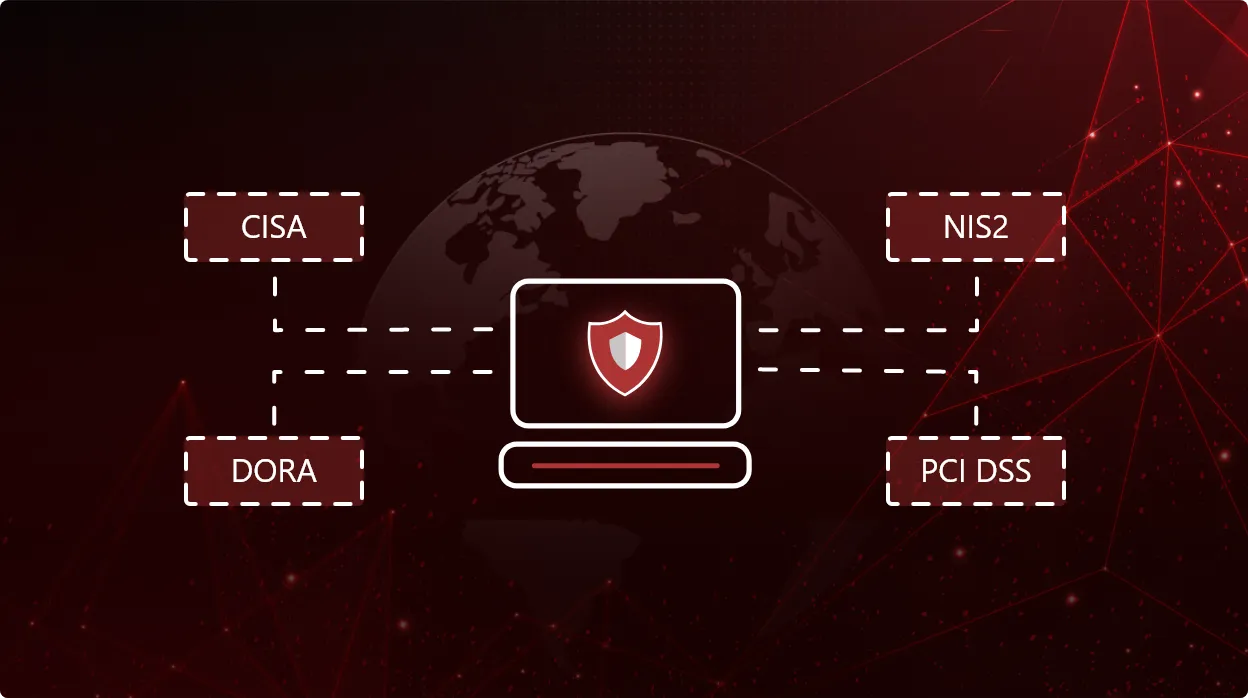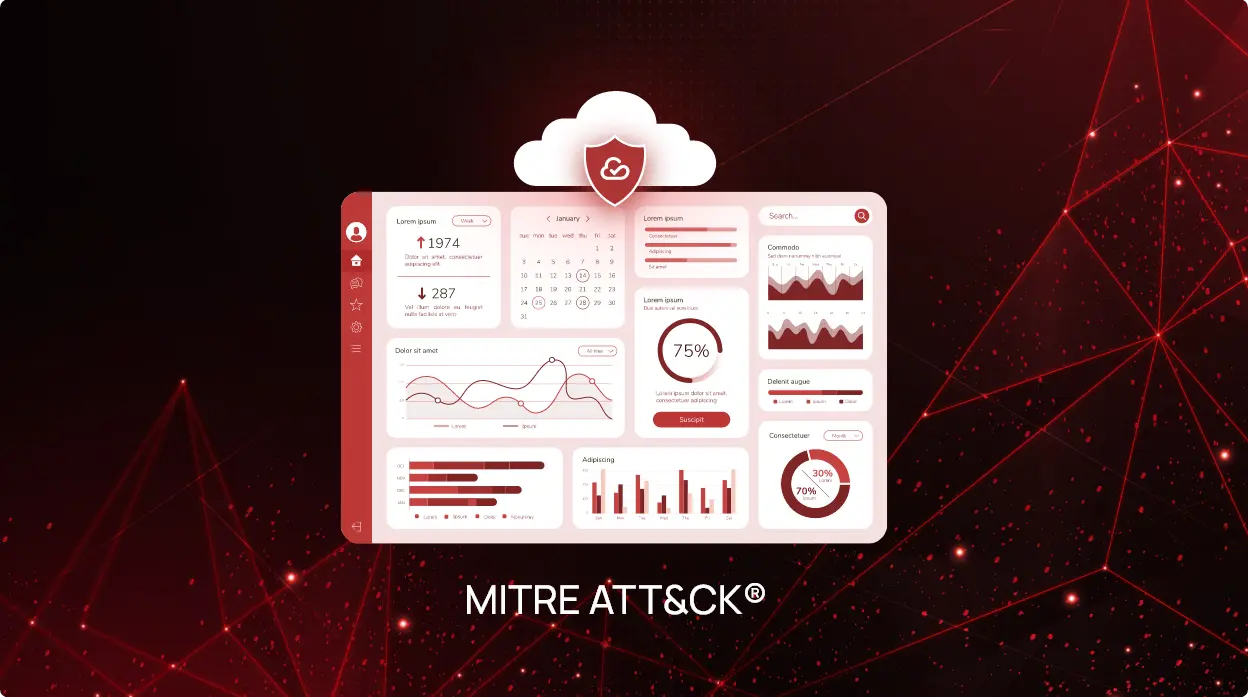
CheckRed Editorial
Navigating the evolving cloud compliance landscape
Cloud compliance is undergoing rapid and continuous evolution. With the increasing reliance on cloud infrastructure, organizations must remain vigilant in ensuring adherence to regulatory standards to safeguard sensitive data and maintain operational resilience. These regulations impose stringent requirements on organizations to strengthen and enhance their cybersecurity posture and proactively minimize potential cybersecurity risks.

Understanding key compliance regulations
CISA (Cybersecurity and Infrastructure Security Agency)
As a pivotal agency within the United States, CISA plays a significant role in fortifying cybersecurity across critical infrastructure sectors. Tasked with safeguarding the nation’s cyber and physical infrastructure, CISA provides guidance, resources, and coordination efforts to enhance resilience against cyber threats. By promoting collaboration between government and private sector entities, CISA aims to strengthen the nation’s cybersecurity posture and mitigate risks to essential services and systems.
NIS2 (Network and Information Security Directive)
In the European Union, NIS2 is a directive aimed at strengthening cybersecurity resilience across critical sectors. Building upon its predecessor, NIS1, NIS2 expands the scope of cybersecurity requirements to encompass a broader range of industries, including energy, finance, healthcare, and digital infrastructure. By mandating stricter cybersecurity measures and penalties for non-compliance, NIS2 endeavors to fortify Europe’s digital resilience and combat evolving cyber threats effectively.
DORA (Digital Operational Resilience Act)
As the financial sector’s new frontier in regulatory compliance, DORA holds significant implications for organizations operating within the European Union. With its slated implementation, DORA seeks to enhance the digital safety of financial entities by introducing robust measures for managing cyber risks and ensuring operational continuity. By emphasizing transparency, governance, and the monitoring of third-party service providers, DORA aims to foster resilience against cyber threats and minimize disruptions to financial services.
PCI DSS
The evolution of the Payment Card Industry Data Security Standard (PCI DSS) to version 4.0 signifies a pivotal milestone in payment card security. Version 4.0 introduces significant changes aimed at addressing emerging threats and bolstering security measures. Key modifications include the implementation of a customized approach, enhanced authentication controls, updated password requirements, and refined assessment procedures. By adapting to evolving security landscapes and emerging threats, PCI DSS version 4.0 underscores the industry’s commitment to safeguarding sensitive payment card data and maintaining trust in electronic transactions.
What are the critical compliance challenges?
Complexity of compliance
The changing regulatory landscape presents a significant challenge for organizations as they grapple with the complexity of adhering to evolving compliance requirements. With regulations like CISA, NIS2, DORA, and PCI DSS undergoing continuous updates and revisions, organizations must invest considerable time and resources to stay ahead of changing mandates. This demands meticulous attention to detail and a strong understanding of compliance nuances.
Need for continuous monitoring
Achieving and maintaining compliance is a perpetual process that demands continuous monitoring. It would be a mistake to think it is a one-time quest that ends with achieving compliance. As cyber threats and regulatory standards evolve, organizations must adopt a proactive approach to compliance management. Continuous monitoring enables organizations to detect and mitigate compliance gaps in real time, ensuring adherence to regulatory standards and strengthening cybersecurity resilience. By implementing robust monitoring mechanisms, organizations can identify potential vulnerabilities and address them expediently, thereby minimizing the risk of non-compliance.
Risk of non-compliance
The consequences of non-compliance can be severe, ranging from financial penalties, legal ramifications, and reputational damage. Organizations that fail to adhere to regulatory standards risk facing hefty fines imposed by regulatory authorities, which can have a significant impact on their financial health. Moreover, non-compliance may erode customer trust and confidence, resulting in reputational harm and loss of business opportunities. Data breaches and cyber incidents are increasingly prevalent today, and the stakes of non-compliance are higher than ever. As such, organizations must prioritize compliance efforts and allocate sufficient resources to mitigate the risk of non-compliance effectively.
CheckRed – Complete cloud compliance
As organizations struggle to handle and navigate the complexities of cloud compliance, CheckRed offers comprehensive cloud security solutions tailored to meet diverse compliance needs. Let’s explore how CheckRed helps businesses in cloud compliance:
Comprehensive cloud security solutions
CheckRed’s Cloud-Native Application Protection Platform (CNAPP) offers complete cloud security – encompassing Cloud Security Posture Management (CSPM), Cloud Workload Protection Platform (CWPP), Cloud Infrastructure Entitlement Platform (CIEM) – in addition to SaaS Security Posture Management (SSPM). By offering a suite of integrated solutions, CheckRed equips organizations with the tools and capabilities necessary to address a variety of compliance requirements effectively.
Streamlining compliance management
CheckRed plays a crucial role in streamlining compliance management processes by providing all necessary solutions under one roof. Organizations no longer need to juggle multiple vendors or disparate tools to address compliance mandates. Instead, they can leverage CheckRed’s unified platform to centralize compliance management efforts, streamline workflows, and ensure consistency across compliance initiatives. With CheckRed, organizations can simplify compliance management and devote more resources to core business functions.
Benefits of consolidation
Consolidating cloud security solutions with CheckRed offers a wide range of benefits, including cost-effectiveness, ease of management, and improved visibility. By consolidating solutions under a single platform, organizations can eliminate redundant costs associated with managing multiple vendors and streamline procurement processes. Additionally, CheckRed’s unified dashboard provides organizations with enhanced visibility into their cloud environments, enabling them to gain deeper insights into compliance posture and potential risks. With CheckRed, organizations can achieve greater operational efficiency, mitigate compliance-related risks, and enhance overall security posture.
As regulatory mandates evolve everyday, organizations must prioritize compliance efforts and adopt proactive measures to address compliance challenges effectively. By leveraging CheckRed’s complete cloud security solution, organizations can streamline compliance management processes, consolidate security solutions, and achieve compliance with confidence and resilience.
See CheckRed in Action
Dive into the future with our interactive demo
and explore the possibilities.
Related Posts





